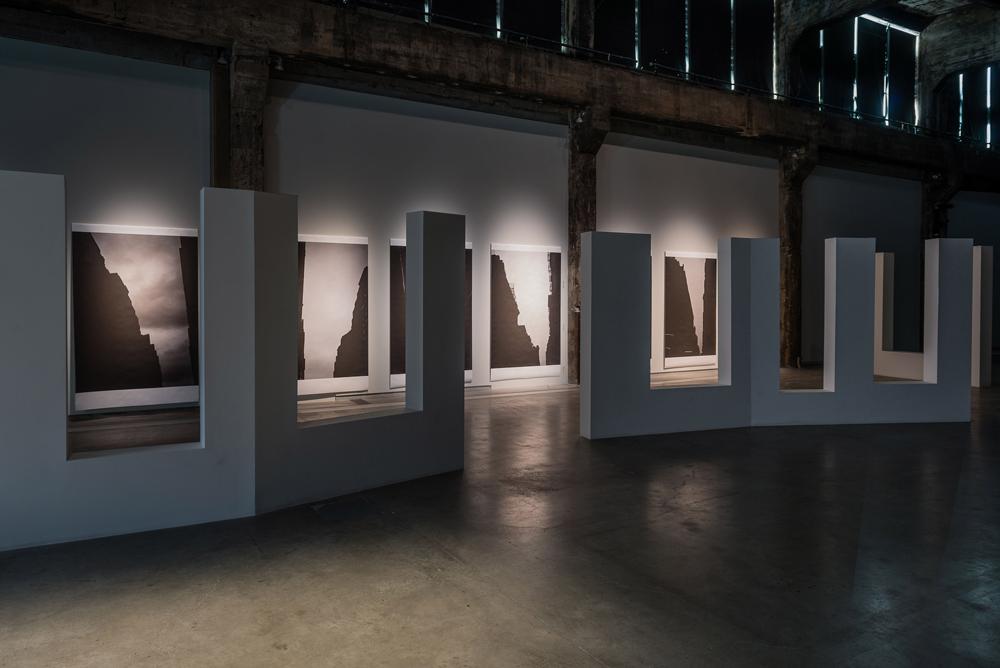Jocelyne Alloucherie is a veteran of the Quebec photography scene, and her current show in the main gallery at the Darling Foundry combines examples of the photo work that established her reputation together with an exciting new foray into video projection.
The common thread between the two bodies of work is an emphasis on poetic urban spectacle. In the series of free-hanging black and white photos on Tyvek that span a wall of the main gallery at the Darling, Alloucherie shows a series of plunging city skylines at dusk. The shadows of the buildings turn the streets into Gothic chasms. They highlight the transfiguring intensity of the distant, setting light in the sky.
Alloucherie’s cities are always visceral, and her photo works are often accompanied by installational structures that mime city space and create active reference points of mass and volume for the photographic images. Her chasms carry suggestions of disorienting entrapment, yet they resolve into an implacable beyond-space of shimmering white light. The scale of the images and the accompanying sculptural elements is monumental, and they read as extensions of an overwhelming civic space. The art harks back to a romantic sublime, but it is a sublime updated into something now barricaded—a space that impacts us, but that remains hovering just beyond reach.
The accompanying video by Alloucherie brings a 27-minute-long collage of everyday narrative to this dystopic scenario. Presented on three abutting screens and shot from left-centre, centre and right-centre points of view that impose a classical vanishing-point perspective to the ensemble, we see a series of Montreal alleyways that function as theatres of intimate city experience. Often cast in deep shadow, or captured at night, the alleyways are a formal inverse of the tapering-sky images. They show what we don’t see in the photographs. Feats of editing pace the three separate views into what seems a continuous meditation on time, light and human activity. People gather and talk, take shortcuts, walk their dogs. Cats and squirrels share equal time, as does the weather when we see the alleyways run with water or turn into mysterious mirrors of reflective light. If the chasms represent the limitations of the city, the alleyway videos speak to a sense of privacy and a cherished arena of potential. This is where we want to live. This is where we can live—in the now largely vacated service corridors of differently imagined cities.
Next door in the smaller Darling Foundry gallery, Yann Pocreau constructs his own surprise meditation on light and shadow. After Alloucherie’s cities, the last thing one expects to see is a convincing, to-scale, photographic recreation of a Chartres Cathedral interior that shimmers in the dark, with shards of white light breaking through the drywall of the gallery. But in Cathédrale, Pocreau offers just that, adding the effects of a subtle smoke machine hidden in the wall to create a rising, restive atmosphere in the room. It is a stage-set materialization of sacred space, and it relates to a small projection that shows a film-scratched ball of light emanating from the image of a church’s stained-glass rose window. It is Stan Brakhage meets Victor Hugo—a poetics of light and darkness that plays into the history of photography. As with Alloucherie, Pocreau takes into the shadowlands where film meets light and tells a story.









